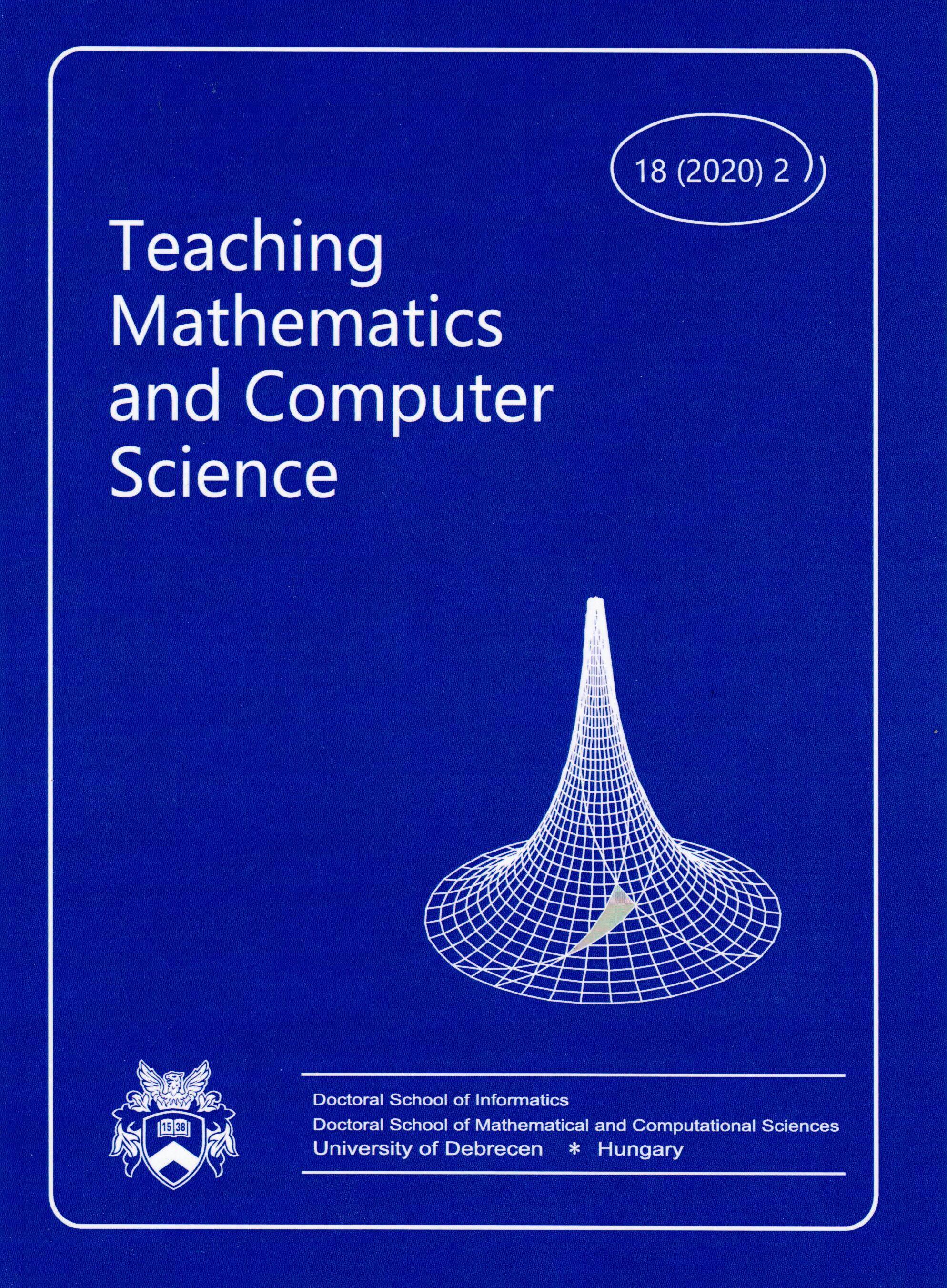Vol. 18 No. 2 (2020)
##issue.tableOfContents##
Articles
-
Gamification in Higher Education
87-106Views:787The way of thinking and the way of life of the today's children and teenagers have changed radically. Some of the well-established pedagogical methods that were used for decades have become obsolete. Therefore, we need to look for a new method to approach Generations Z and Alpha. Gamification, which has been known since 2010 and means the use of game elements in other areas of life, offers an opportunity to do so.
In addition to a brief description of gamification, my article shows some possibilities for using it at the university. Furthermore, I investigate the impact of gamification on the student in "Algorithms and Data Structures" university course.Subject Classification: 97P30
PDF624 -
Task variations for backtrack
107-120Views:154This article has been written for informatics teachers who want to issue back-track based tasks on their lessons or as homework or on competitions. We present a few methods to generate a more complicated problem from a simpler task, which will be more complex, and its solution needs a good idea or trick. Starting from an example, we lead the reader through increasingly di cult task variations.
Subject Classification: 97P50
PDF148 -
Regula falsi in lower secondary school education II
121-142Views:206The aim of this paper is to investigate the pupils' word problem solving strategies in lower secondary school education. Students prior experiences with solving word problems by arithmetic methods can create serious difficulties in the transition from arithmetic to algebra. The arithmetical methods are mainly based on manipulation with numbers. When pupils are faced with the methods of algebra they often have difficulty in formulating algebraic equations to represent the information given in word problems. Their troubles are manifested in the meaning they give to the unknown, their interpretation what an equation is, and the methods they choose to set up and solve equations. Therefore they mainly use arithmetical and numerical checking methods to solve word problems. In this situation it is necessary to introduce alternative methods which make the transition from arithmetic to algebra more smooth. In the following we will give a detailed presentation of the false position method. In our opinion this method is useful in the lower secondary school educational processes, especially to reduce the great number of random trial-and-error problem solving attempts among the lower secondary school pupils. We will also show the results of some problem solving activities among grade 6-8 pupils. We analysed their problem solving strategies and we compared our findings with the results of other research works.
Subject Classification: 97-03, 97-11, 97B10, 97B50, 97D40, 97F10, 97H10, 97H20, 97H30, 97N10, 97N20
PDF222 -
Solution of an open reality based word-problem in two secondary schools
143-156Views:236This survey through an open reality based word problem is intended to assess - in two secondary schools in Komárom (Hungary) and in Komarno (Slovakia, Hungarian name: Révkomárom) in grade 10 - the ability of students to realize openness of a task. The comparison is justified by the fact that the language of teaching is Hungarian in both secondary schools, but with different curricula. This survey is related to the Content Pedagogy Research Program by the Hungarian Academy of Sciences. It is preceded by several surveys with a word problem (Pocket Money) of the third author and led by her between 2012 and 2015, and within that project in 2017 within a large sample test, among about 1500 students and university students in Hungary (?, ?) (?, ?). In our research we wanted first to assess how openly work students in two schools of the two cities mentioned in solving the same task. The answer to this question was similar to the large sample test results, so most of the students worked in a closed way, when solving this word problem. So we went on and tried to explore how students thought about their own solution given to this task, through mixed-type interviews.
Subject Classification: 97D70, 97F90, 97D50, 97M10
PDF183 -
Some Pythagorean type equations concerning arithmetic functions
157-179Views:198We investigate some equations involving the number of divisors d(n); the sum of divisors σ(n); Euler's totient function ϕ(n); the number of distinct prime factors ω(n); and the number of all prime factors (counted with multiplicity) Ω(n). The first part deals with equation f(xy) + f(xz) = f(yz). In the second part, as an analogy to x2 + y2 = z2, we study equation f(x2) + f(y2) = f(z2) and its generalization to higher degrees and more terms. We use just elementary methods and basic facts about the above functions and indicate why and how to discuss this topic in group study sessions or special maths classes of secondary schools in the framework of inquiry based learning.
Subject Classification: 97F60, 11A25
PDF240







